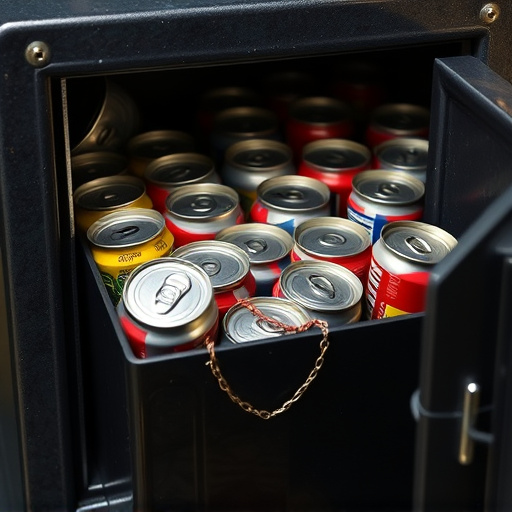In today's world, hidden compartments within food containers offer a creative and discreet way to store sensitive items like medications, emergency supplies, or important documents, enhancing security while maintaining everyday functionality. These custom-made spaces can be seamlessly integrated into ordinary containers like mason jars or plastic storage bins, ensuring only the owner knows their location. High-quality materials and airtight seals guarantee durability and safety. Food Container Hidden Compartment Ideas transform everyday products into versatile tools catering to diverse consumer needs while bolstering security measures.
In today’s digital era, security and discretion are paramount. This article explores the innovative concept of hidden compartments within consumer products, with a focus on food containers. We delve into creative ideas for integrating concealed security features, enhancing safety while maintaining user privacy. From smart designs to practical implementations, we provide insights into making everyday items more secure. Discover how these hidden compartments can safeguard valuable items and offer peace of mind, especially when it matters most. “Food Container Hidden Compartment Ideas” offer a modern solution for enhanced protection.
- Understanding the Concept of Hidden Compartments in Consumer Products
- Creative Food Container Hidden Compartment Ideas for Security and Discretion
- Practical Implementation and Considerations for Effective Concealed Security Features
Understanding the Concept of Hidden Compartments in Consumer Products
In the ever-evolving landscape of consumer product design, hidden compartments have emerged as a clever concept for enhancing security and functionality. The idea behind this innovation is simple yet effective: integrating discreet spaces within everyday items, such as food containers, to conceal valuable items or sensitive information. These concealed areas offer a unique solution for individuals seeking discreet storage options, whether it’s for personal safety measures or protecting proprietary data.
Food containers with hidden compartments represent a practical application of this concept. By incorporating subtle cavities into the design, these containers can store essential items like medications, emergency supplies, or even important documents without compromising their primary function. This integration of security features into consumer products is particularly appealing in today’s world, where discretion and safety are paramount.
Creative Food Container Hidden Compartment Ideas for Security and Discretion
Incorporating a food container hidden compartment into your security strategy can offer a creative and discreet solution for keeping sensitive items safe. One innovative idea is to utilize seemingly ordinary food containers, such as mason jars or plastic storage bins, with concealed compartments built within. These compartments can be designed to fit various sizes and shapes, allowing you to store documents, small electronics, or even cash in plain sight among your groceries or pantry items.
For added discretion, consider using opaque or tinted containers that mimic everyday food packaging. This technique not only hides the compartment but also reduces suspicion if someone were to glance at your storage areas. Customization is key; you can create multi-layered dividers within the container to accommodate different sizes and ensure no one but you knows the exact location of your hidden treasures.
Practical Implementation and Considerations for Effective Concealed Security Features
In practical terms, implementing hidden compartments within consumer products, particularly food containers, requires careful consideration and innovative design thinking. Manufacturers must balance the need for secrecy with functionality, durability, and safety standards. For instance, a cleverly designed lunch box could feature a concealed compartment to store valuables or sensitive items. This space can be accessed through a discreet mechanism, such as a magnetic closure or a hidden zip, ensuring easy access yet maintaining secrecy.
When considering food containers with hidden compartments, materials play a crucial role. Using high-quality, non-toxic plastics or metals guarantees both durability and the ability to withstand various conditions. Additionally, designers should focus on creating airtight seals for any openings to prevent leakage or contamination, especially when storing food items. With creative Food Container Hidden Compartment Ideas, everyday products can offer unexpected features, catering to diverse consumer needs while enhancing security measures.
In conclusion, the integration of hidden compartments within everyday food containers offers a unique approach to enhancing security and discretion. By leveraging creative design and practical implementation, these concealed security features provide an innovative solution for safeguarding valuable items or sensitive information. With further exploration and refinement, Food Container Hidden Compartment Ideas can revolutionize personal safety and privacy in our modern world.
